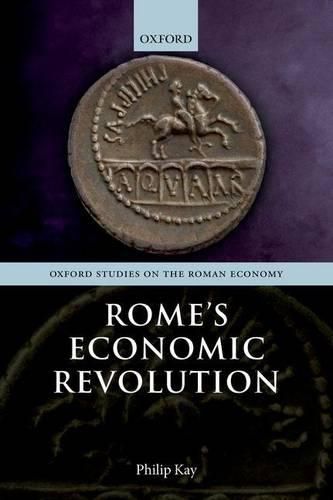Readings Newsletter
Become a Readings Member to make your shopping experience even easier.
Sign in or sign up for free!
You’re not far away from qualifying for FREE standard shipping within Australia
You’ve qualified for FREE standard shipping within Australia
The cart is loading…






In this volume, Philip Kay examines economic change in Rome and Italy between the Second Punic War and the middle of the first century BC. He argues that increased inflows of bullion, in particular silver, combined with an expansion of the availability of credit to produce significant growth in monetary liquidity. This, in turn, stimulated market developments, such as investment farming, trade, construction, and manufacturing, and radically changed the composition and scale of the Roman economy. Using a wide range of evidence and scholarly investigation, Kay demonstrates how Rome, in the second and first centuries BC, became a coherent economic entity experiencing real per capita economic growth. Without an understanding of this economic revolution, the contemporaneous political and cultural changes in Roman society cannot be fully comprehended or explained.
$9.00 standard shipping within Australia
FREE standard shipping within Australia for orders over $100.00
Express & International shipping calculated at checkout
In this volume, Philip Kay examines economic change in Rome and Italy between the Second Punic War and the middle of the first century BC. He argues that increased inflows of bullion, in particular silver, combined with an expansion of the availability of credit to produce significant growth in monetary liquidity. This, in turn, stimulated market developments, such as investment farming, trade, construction, and manufacturing, and radically changed the composition and scale of the Roman economy. Using a wide range of evidence and scholarly investigation, Kay demonstrates how Rome, in the second and first centuries BC, became a coherent economic entity experiencing real per capita economic growth. Without an understanding of this economic revolution, the contemporaneous political and cultural changes in Roman society cannot be fully comprehended or explained.